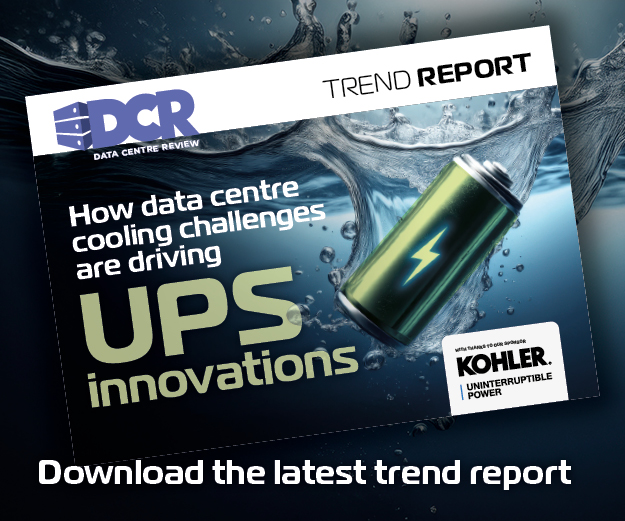The detail is in the data for managing sustainability commitments, says Maggie Laird, Head of Lumada Software Business and Corporate Sustainability.
Whether you’re a Chief Sustainability Officer, a Chief Data Officer, or another member of the C-suite, there are a few key sustainability questions often top of mind: are we making a real difference to the environment? Are we on track to meeting our sustainability objectives, and how do we know the progress we’re making?
Both questions are closely linked to the topic of data, and both serve as a reminder of data’s importance at a time when customers, colleagues and other stakeholders demand greater transparency. Legislation such as the Corporate Sustainability Reporting Directive (CSRD) in the EU and Inflation Reduction Act in the US also make it imperative for businesses to be aware of the effect their activities are having on the environment and the support available to them to be greener.
The truth is, companies owe it to themselves, the people they work with, and wider society, to firstly know what their baseline is – where are they on their journey to lower emissions and drive decarbonisation? That has to be the starting point of any strategy because it’s from there that a company can begin to envision what good looks like for them and the planet. Only then can they begin to take effective measures to reduce energy consumption and run more efficient operations.
Indeed, data, and best practice around collecting it, managing it, and analysing it, is one of the most important assets when looking to reduce greenhouse gas (GHG) emissions. To do this well, it is important to appreciate the fact that there are different scopes of data to interrogate. Firstly, there’s Scope 1 and Scope 2 data, which deals with emissions from your own organisation. The majority of companies already have access to this data but don’t know how to read it, which points towards skillset issues and inaccessibility to what should be a widely shared and understood issue.
Next, there’s Scope 3 data, which measures the upstream and downstream supply chain. This scope offers increasing opportunity and we’re seeing more companies putting it into the contracts of the businesses they work with. Despite its growing importance, most companies don’t have visibility of this type of information. Consequently, there’s a shortfall between the data that more and more people want to see, and the amount of information companies are able to produce.
Data, data everywhere
All this feeds into one of the biggest issues at play when it comes to managing data: proliferation. If the data exists, those in charge of reporting on sustainability need to find it. What often happens is that the data resides in so many different places and it isn’t standardised. This makes the analysis and making sense of the data incredibly difficult. It’s a process that businesses can take years to complete. Any solution that a company deploys must be efficient, repeatable, and accurate, and with the growing concerns around greenwashing, this last point is vital.
Another challenge to bear in mind is that of digital transformation, specifically green digital transformation. This includes technical aspects around tools and solutions, some of which I’ve already discussed, as well as governance aspects. There has to be a universal buy in, particularly from the top, when it comes to establishing sustainable principles and processes. To do this, companies have to establish the ‘why’ behind their drive towards lower emissions. Both technical and governance aspects should work in tandem but currently they don’t in many organisations.
This all brings us back to data as the key ingredient in building systems and building trust in those systems. Data has to be in the right place and catalogued so that businesses can work towards establishing the sustainability goals they have.
An intelligent approach
Addressing these challenges requires a solution that can aggregate and get the data into the right place to be able to run the analysis needed. And for that solution to be at its most efficient, the introduction of artificial intelligence (AI), automation and predictive analytics can provide powerful insights that can inform sustainability strategy, help accurately track progress, and get the entire company leadership involved in the mission to reducing their carbon footprint.
For example, Golden Grove Nursery, a supplier of citrus nursery trees to the citrus industry in Australia, used AI, advanced analytics and sensor technology to inform data-driven irrigation water management practices for sustainable, environmentally friendly food production. The company deployed a solution developed by Hitachi Vantara to measure and assess moisture content in the growing media of pots, as well as crop water use, to provide insights that inform practices such as irrigation and fertilisation decisions. This in turn helped the company to reduce the overheads of water usage, improve environmental outcomes, and ensure they maintain compliance with regulatory requirements.
A clear direction of what a sustainability drive can achieve will be instrumental in gaining traction from all areas of the business. Yes, a solution that is deployed in the right way can help a company to hit its own sustainability goals and those stipulated by regulation. But there is also potential for reduced cost, as we can see in the Golden Grove Nursery example. It is a double bottom line benefit that pleases all stakeholders.
A coordinated future
Sustainability is causing companies to look internally at their own carbon footprint, but the future lies in the way companies and other stakeholders can work together to find lasting solutions that benefit everyone. Currently, too many companies aren’t vetting their suppliers well enough, and although recent events such as the pandemic have made companies question the resilience of their suppliers, they now have to scrutinise their sustainability also.
The way forward is with partnerships through which companies will report their sustainability credentials in an aligned way. It requires standardisation so that everyone can coordinate their ecosystems together. Otherwise, we’ll continue to see each firm tending its own walled garden of data with no insights being shared further afield. While some efforts to standardise sustainability data have been made, I hope to see more momentum built around this effort.
The tools that are available to organisations today are powerful and will only continue to further equip them as they better understand the sustainability of their operations. They should start by asking the right questions of where their data is and how they can read it to create insights and plans for improvement. But by getting smarter with the data they have access to, they can reduce costs, inform the decisions they make for further investment, and ultimately emerge as a more sustainable business.



